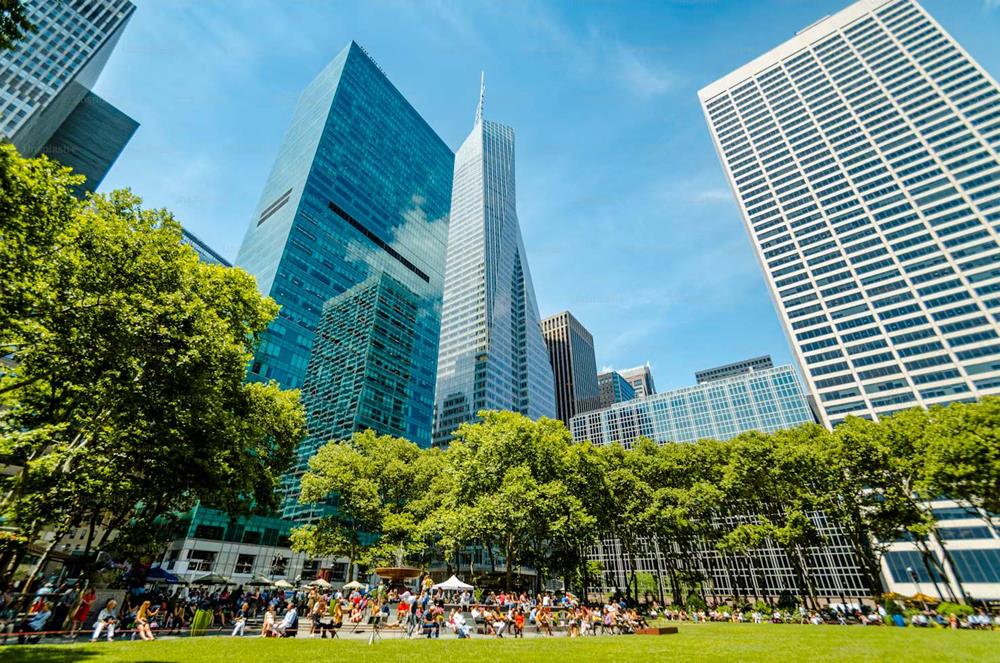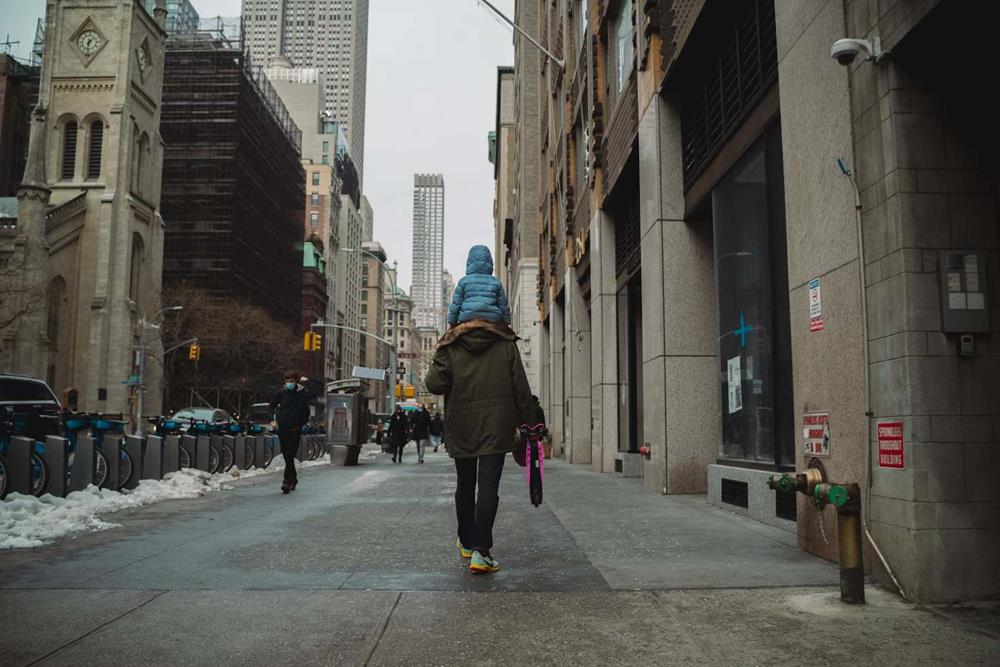Living in New York City is often portrayed with a mix of awe and skepticism, especially when it comes to family life. The city’s vibrant culture, diverse communities, and abundant opportunities are as much a part of its allure as its challenges, such as high living costs and bustling urban pace. This blog post delves into various aspects of family life in New York City, exploring the quality of life for families who call this iconic metropolis home.
Adapting to the City’s Pace
Life in New York City moves at a speed all its own, a relentless tempo that demands quick adaptation and resilience from its inhabitants. For families, weaving this pace into the fabric of their daily lives becomes second nature, an essential skill for thriving amidst the urban sprawl. Morning routines, in particular, are a masterclass in synchronization and efficiency, reflecting the city’s broader dynamics.
Each family member becomes a cog in a well-oiled machine, with tasks and timings orchestrated to minimize friction and maximize harmony. Parents and children alike grow accustomed to the rhythm of preparation, from the early morning wake-up calls to the last-minute checks for homework and house keys. This dance is performed with the understanding that flexibility is not just beneficial but necessary, as the city’s unpredictability could throw a wrench in the most carefully laid plans.
Morning Commutes and School Runs
Morning commutes and school runs in New York City encapsulate the dynamic and often frenetic pace of urban family life. As the city awakens, families across the boroughs gear up for the day ahead, embarking on a well-rehearsed routine that involves coordinating schedules, preparing breakfasts, and ensuring that backpacks and briefcases are packed with all the day’s necessities. The process of getting children ready for school while simultaneously preparing for a day at the office is a delicate balancing act, one that requires precision, patience, and a good dose of humor.
Mastering Public Transportation
For many New York families, public transportation is the lifeline that connects them to schools, workplaces, and after-school activities. Navigating the subway or bus system becomes second nature, even when managing the added complexities of strollers, school projects, and the occasional musical instrument. Parents become skilled at finding the most efficient routes, timing their journeys to coincide with less crowded trains, and securing spaces where their children can sit or safely stand. The morning commute is not just a travel experience; it’s a daily lesson in urban navigation and social interaction for children, exposing them to the city’s diversity and teaching them valuable life skills in adaptability and public etiquette.
The School Run Experience
The school run in New York City is far from a mundane task; it’s an immersion into the vibrant life of the city’s streets. For some families, this might involve a brisk walk through bustling neighborhoods, navigating crowded sidewalks, and stopping at crosswalks where the city’s cacophony fills the air. These walks are opportunities for parent-child conversations, moments to plan the day, or simply enjoy the city’s architecture and street scenes. For others, the school run includes a subway ride, where the mosaic of New York’s population is on full display. Here, children learn to appreciate the rich tapestry of cultures, languages, and personalities that make up their city, gaining a broader perspective on the world from an early age.
Apartment Living
Apartment living in New York City presents a unique set of challenges and opportunities for families, who must often make the most of limited square footage to accommodate their needs. This constraint necessitates a creative and strategic approach to space management, turning the potential drawback of compact living into an opportunity to design efficient, multifunctional, and cozy living spaces.
- Maximizing Space with Multi-Functional Furniture: One of the keys to successful apartment living in NYC is the use of multi-functional furniture, which serves dual purposes and saves valuable space. Sofa beds, for instance, can transform a living room into a guest room in a matter of seconds, providing comfortable sleeping arrangements without the need for an extra bedroom. Extendable dining tables can accommodate family meals and double as workspaces during the day. Storage ottomans not only offer additional seating but also hide away toys, books, and other items, keeping the living area tidy and spacious. These smart furniture choices allow families to adapt their living spaces to a variety of activities throughout the day, from work and study to relaxation and entertainment.
- Utilizing Vertical Space: In New York apartments, where floor space is at a premium, taking advantage of vertical space becomes essential. High shelves, wall-mounted cabinets, and hanging organizers can dramatically increase storage capacity without encroaching on living areas. This vertical approach not only helps in organizing belongings more efficiently but also draws the eye upward, creating a sense of airiness and openness in otherwise compact rooms. Creative solutions like loft beds for children’s rooms can free up floor space for play areas, while magnetic strips and wall-mounted racks can keep kitchen utensils and tools handy without cluttering countertops.
- Embracing Decluttering and Minimalism: The limited space in city apartments also encourages a minimalist lifestyle, where decluttering becomes a regular practice. Families learn to curate their possessions carefully, keeping only what is necessary or truly cherished. This selective approach not only helps in managing physical space but also promotes a more intentional and mindful way of living. Regular decluttering sessions can involve the whole family, turning the process into an opportunity for teaching children about the value of simplicity and the importance of organizing their personal space.
- Personalizing the Space: Despite the challenges of apartment living, New York families excel at infusing their homes with warmth and personality, transforming them into true sanctuaries amidst the urban hustle. Personal touches like family photos, artwork, and colorful textiles can add vibrancy and character to any space. Plants are another popular way to bring life and freshness into apartments, improving air quality and adding a touch of nature to the urban environment. Creative lighting solutions, from fairy lights to statement lamps, can also play a significant role in enhancing the ambiance of a home, making it more inviting and comfortable.
Apartment living in New York City, while challenging, inspires families to embrace innovation and creativity in their approach to home design. By optimizing space with multi-functional furniture, utilizing vertical storage, practicing decluttering, and adding personal touches, families create living spaces that are not only functional but also reflective of their personalities and lifestyles.
After-School Activities
As the school day winds down in New York City, the rhythm of the city shifts to accommodate a vibrant array of after-school activities, reflecting the diverse interests and talents of its young residents. The city, with its rich cultural tapestry and extensive resources, offers a wide range of options for children to engage in, from artistic pursuits and sports to academic enrichment and community service projects. This bustling after-school landscape not only contributes to children’s holistic development but also plays a significant role in their social lives.
A Hub of Cultural and Artistic Exploration
New York City, known for its cultural vibrancy, provides children with unparalleled opportunities to delve into the arts. Music lessons in Greenwich Village, for instance, allow budding musicians to learn from accomplished artists in an area renowned for its musical heritage. Similarly, dance studios in neighborhoods like the Upper West Side and Brooklyn offer classes in everything from ballet to hip-hop, fostering a love for movement and expression. Art classes, theater groups, and creative writing workshops across the city encourage children to explore their creativity and develop their artistic voices, often culminating in performances and exhibitions that showcase their talents.
Sports and Physical Activities
For those inclined towards physical activity, the city’s parks and recreational facilities serve as venues for a wide range of sports and fitness pursuits. Soccer practice in Riverside Park, basketball leagues in Harlem, and gymnastics in Queens are just a few examples of the sports programs available to children. These activities not only promote physical health and teamwork but also instill discipline and a sense of achievement. The city’s diverse recreational offerings, from martial arts dojos to swimming pools, ensure that children can find an activity that matches their interests and energy levels.
Academic Enrichment and Skill Building
Beyond the arts and sports, New York City offers a plethora of academic and skill-building programs designed to complement the school curriculum and spark intellectual curiosity. Science clubs, coding workshops, and language classes leverage the city’s educational resources, including museums, libraries, and universities, to provide enriching learning experiences. These programs often introduce children to new subjects and career paths, broadening their horizons and fostering a lifelong love of learning.
The Parental Balancing Act
For parents, supporting their children’s participation in after-school activities often involves a delicate balancing act of coordinating schedules, managing transportation, and ensuring that academic responsibilities are met. Despite these challenges, many parents view these activities as invaluable investments in their children’s development, offering them opportunities to discover their passions, build friendships, and develop skills that extend beyond the classroom.
Dining and Cuisine – A Global Palette
In New York City, dining and cuisine embody the vast cultural tapestry that makes the city unique, turning mealtime into an exploratory adventure for families. The convenience and diversity of the city’s dining scene allow families to enjoy a myriad of flavors, from the simplicity of a classic New York pizza slice shared in a bustling park to the intricate offerings of a dim sum brunch in the heart of Chinatown. These experiences go beyond mere eating, offering a taste of global cultures right at the city’s doorstep, making every meal an opportunity for discovery and enjoyment.
At home, the culinary journey continues with ingredients sourced from the city’s eclectic mix of local markets and international grocers. Families find joy in preparing meals that mirror the city’s diversity, whether it’s crafting a homemade Italian pasta dish or experimenting with spices from a South Asian market. This blend of home-cooked and outside dining experiences enriches family life, providing not just nourishment, but a deeper appreciation for the world’s cultures through the universal language of food.
Evening Routine in the Big Apple
As dusk falls over New York City and the skyline begins to glitter with the city’s iconic lights, the pace of the day shifts for its residents. Families transition from the day’s hustle and bustle into their evening routines, a sacred time for reconnection and relaxation within the compact confines of their city apartments. Despite the lack of expansive living spaces often found in suburban homes, New York families cultivate rich, intimate evening rituals that foster togetherness and warmth.
- Shared Meals: For many families, the evening routine begins with preparing and sharing a meal together. Kitchens in New York apartments, while typically small, become the heart of the home as families congregate to cook, chat, and unwind. The act of sharing a meal transcends its physical space, providing a moment for families to catch up on each other’s lives, discuss the day’s events, and enjoy each other’s company. This time-honored tradition of breaking bread together serves as a daily anchor, reinforcing familial bonds and creating a sense of continuity and comfort amidst the city’s ceaseless rhythm.
- Reading and Storytime: In many families, reading together in the evening is a cherished ritual, especially for those with young children. Storytime is not just a prelude to bedtime; it’s a journey into imagination and a time for parent-child bonding. The simple act of reading aloud provides a quiet, intimate space for families to explore stories, fairy tales, and adventures together, fostering a love for reading and creativity in children. For older children and adults, sharing insights from personal reading or discussing books can be a stimulating way to connect and share ideas.
- Movie Nights: For many New York families, watching a movie together is a favorite way to relax and enjoy shared entertainment. The living room becomes a mini cinema, with families curling up on couches and floor cushions with popcorn in hand. Movie nights offer a way to experience new worlds, emotions, and stories together, sparking conversations and shared laughter. This simple yet enjoyable activity provides a perfect backdrop for family bonding, offering both entertainment and a chance to unwind.
- Reflection and Gratitude: The evening is also a time for reflection and gratitude, where families can discuss what they’re thankful for and share positive experiences from their day. This practice, often incorporated into bedtime routines, helps instill a sense of gratitude and positivity in children, encouraging them to focus on the good in their lives. It’s a quiet, contemplative end to the day that helps foster a positive family environment and emotional well-being.
Community Engagement
In the vast expanse of New York City, the vibrant tapestry of neighborhood life fosters a strong sense of community among families, transforming anonymous urban spaces into intimate social networks. The simple rituals of daily life, from a familiar greeting at the local coffee shop to active participation in school and community events, cultivate deep bonds of friendship and support. This rich social fabric not only counters the city’s inherent anonymity but also enriches the family experience, making the metropolis feel like a collection of small towns woven together, each with its unique character and sense of belonging.
The Weekend Pace in NYC
Weekends in New York City present a much-anticipated break from the weekly routine, allowing families to immerse themselves in the vast array of cultural and recreational activities that the city has to offer. With the hustle of the workweek and school days paused, the city unfolds as a playground of endless possibilities, from its world-renowned museums and vibrant outdoor markets to its scenic waterfronts and green spaces. These two days become a canvas for families to paint with the colors of exploration, learning, and leisure.
- Cultural Immersion in Museums: New York City’s museums are treasure troves of art, history, science, and culture, and many of them go out of their way to cater to families and children with specialized programs. Institutions like the American Museum of Natural History and the Children’s Museum of Manhattan become educational playgrounds, offering interactive exhibits, workshops, and guided tours designed to engage young minds. These experiences not only provide fun learning opportunities but also stimulate curiosity and imagination in children, making the museums a popular weekend destination for families looking to combine education with entertainment.
- Outdoor Markets: Weekends are prime time for exploring the city’s myriad outdoor markets, where families can indulge in a feast for the senses. From the bustling Union Square Greenmarket to the eclectic Brooklyn Flea, these markets offer a glimpse into the local culture and cuisine. Families can sample fresh, artisanal foods, browse handmade crafts, and soak in the vibrant atmosphere. These markets not only serve as a shopping experience but also as a way for families to connect with local producers and artisans, fostering a sense of community.
- Exploration and Day Trips: Weekends also open up opportunities for exploration beyond the immediate neighborhood. Families take advantage of the city’s excellent transit connections to discover new areas, from the historic streets of Greenwich Village to the beachfronts of Coney Island. Each neighborhood offers its unique flavor, history, and attractions, making these explorations a continuous adventure. For those looking to escape the urban environment altogether, day trips to nearby destinations like the Hudson Valley, the Hamptons, or the New Jersey shore offer a complete change of scenery and pace, with nature trails, beaches, and quaint towns to explore.
For families in New York City, weekends are a precious time to step away from the routines of work and school and dive into the rich cultural and recreational offerings of the city. Whether it’s through educational visits to museums, leisurely strolls through outdoor markets, encounters with nature at the zoo, or explorations of new neighborhoods and beyond, weekends provide a canvas for memorable family experiences. These moments not only offer relaxation and enjoyment but also foster learning, discovery, and a deeper connection with the city and each other.
Conclusion
Daily life for families in New York City is characterized by a blend of energy, creativity, and community. The challenges of space, cost, and pace are met with resilience and ingenuity, turning potential drawbacks into the very elements that define the richness of urban family living. In this city of endless possibilities, families craft their unique narratives, finding joy in the vibrant tapestry of city life and the intimate moments of family connection amidst the urban whirlwind.





